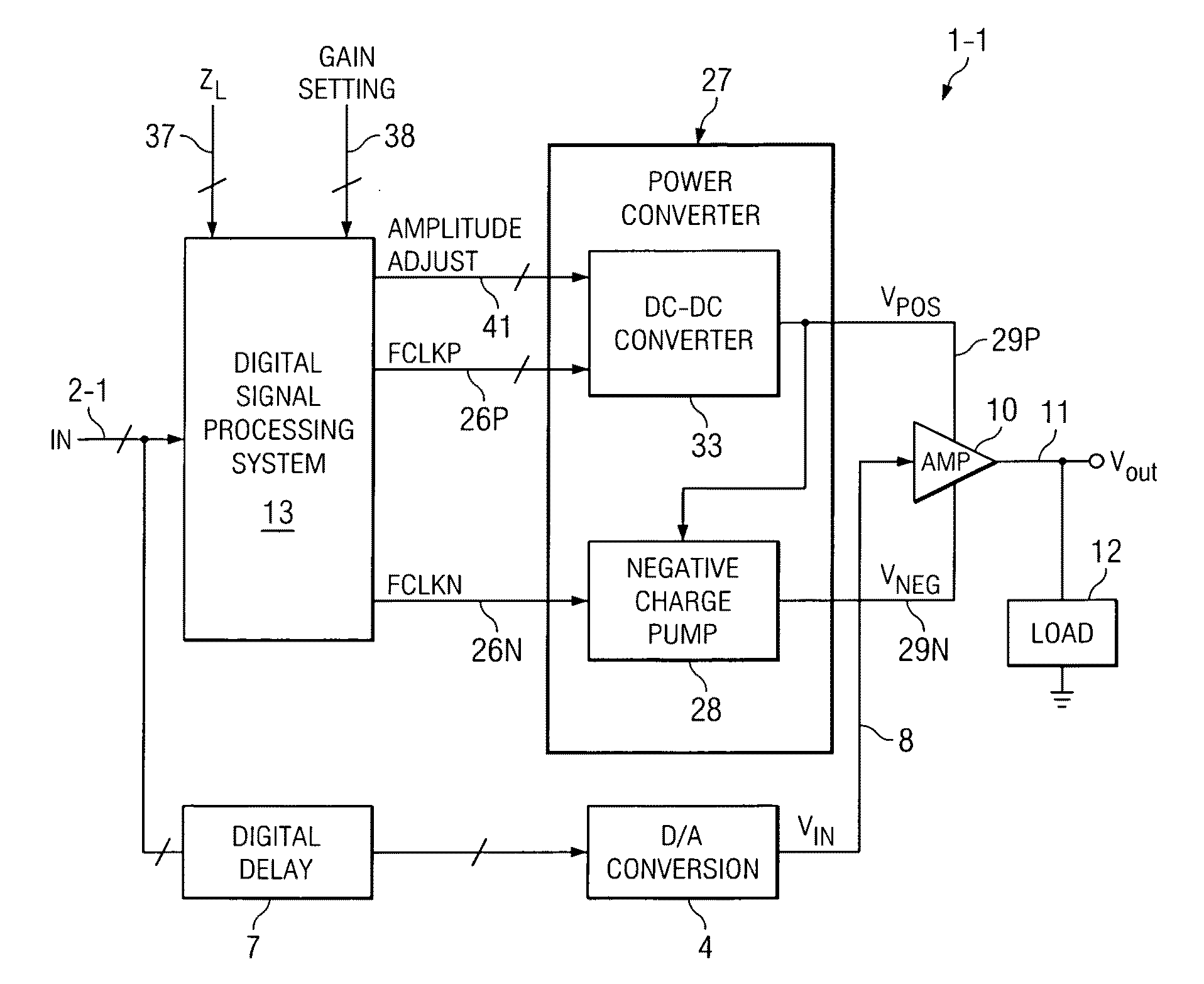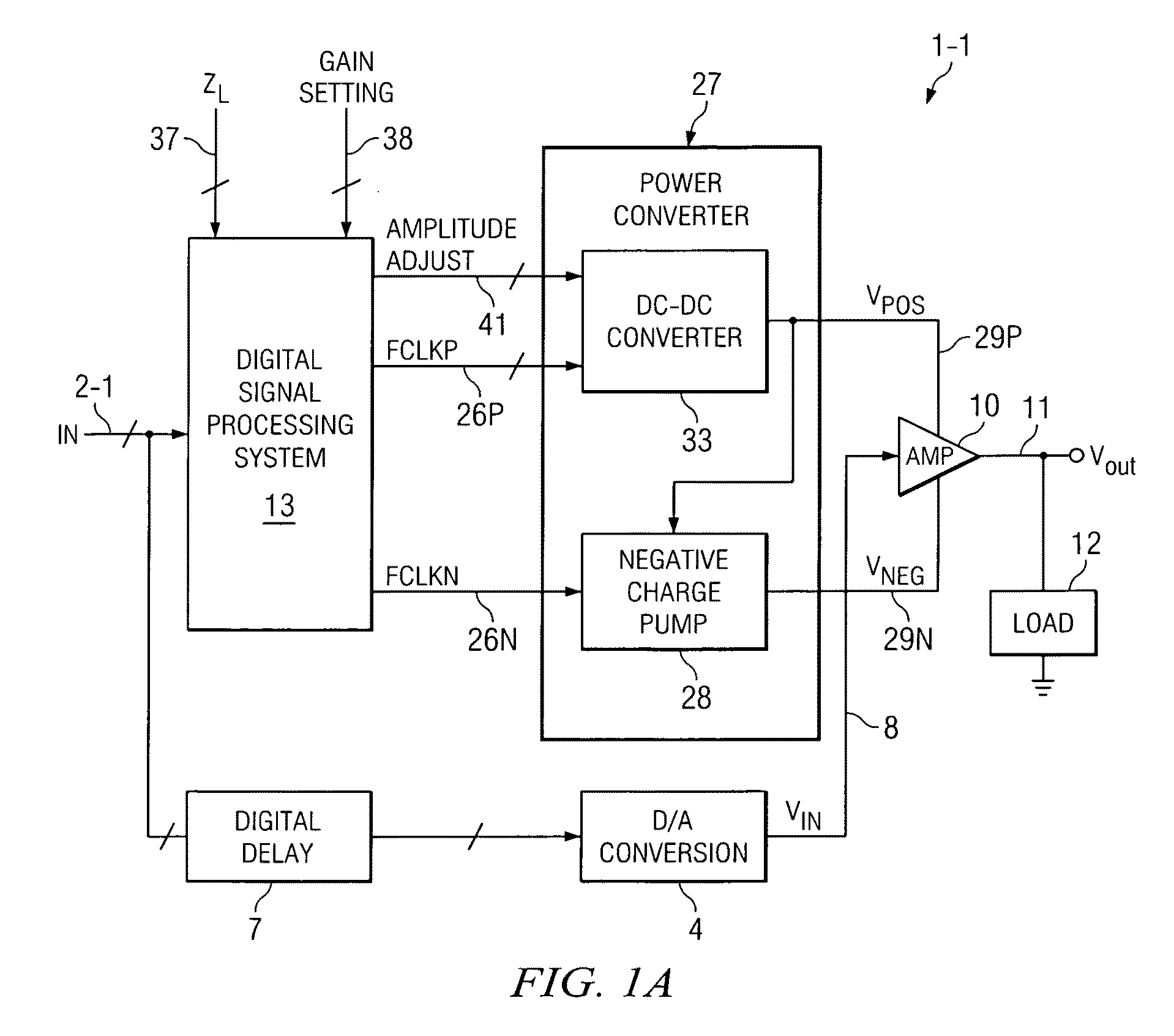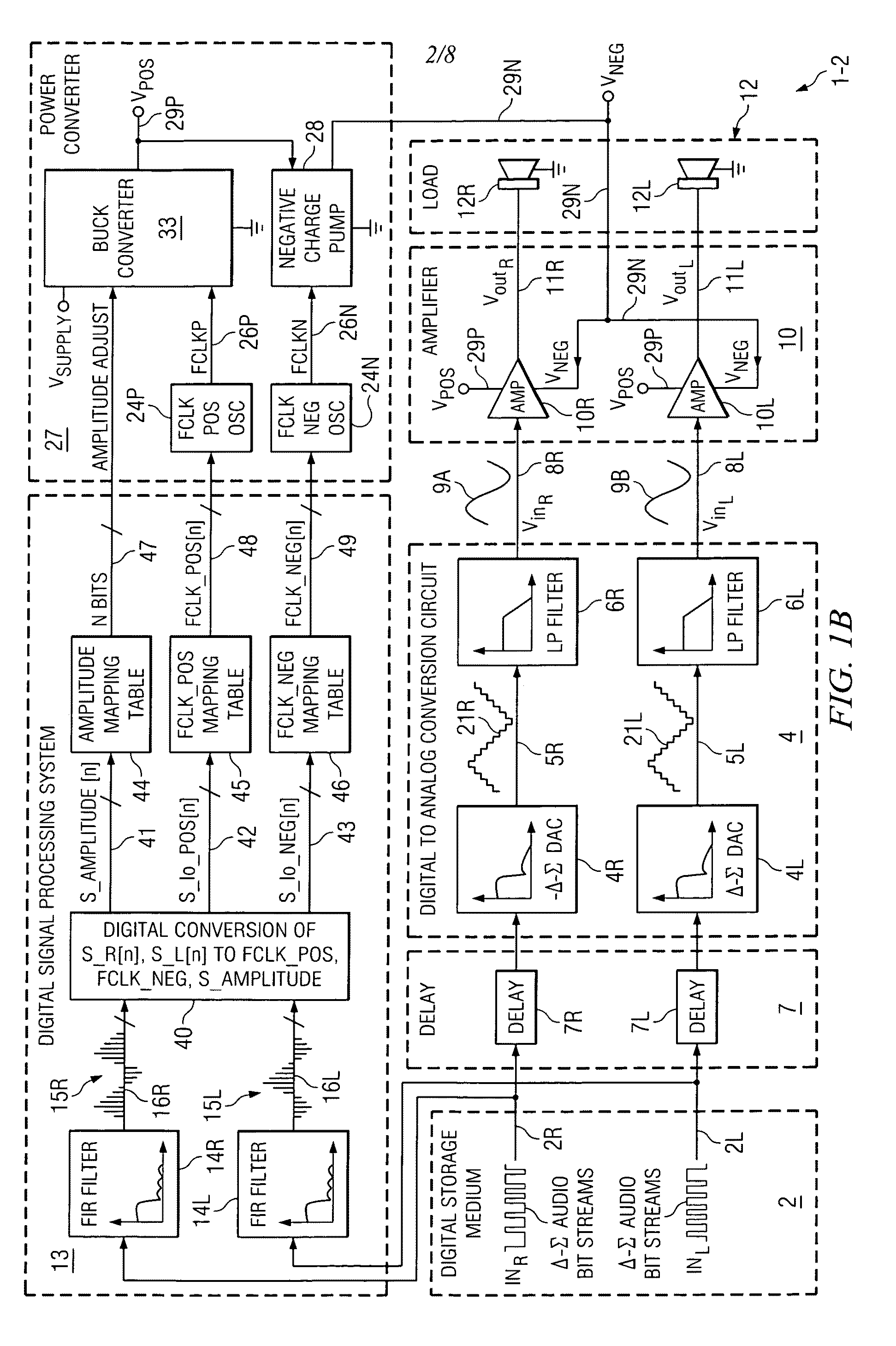Adaptive signal-feed-forward circuit and method for reducing amplifier power without signal distortion
a technology of adaptive signal and amplifier power, applied in the field of amplifier circuitry, can solve the problems of power converter circuitry not being able to provide the power required by the amplifier, power requirements of the amplifier load vary, and power converters may not be power efficient, so as to achieve the effect of reducing power
- Summary
- Abstract
- Description
- Claims
- Application Information
AI Technical Summary
Benefits of technology
Problems solved by technology
Method used
Image
Examples
Embodiment Construction
[0034]The present invention increases the power efficiency of an amplifier and a power conversion circuit, such as a charge pump or switching regulator for biasing the amplifier, wherein the amplifier supplies varying amounts of signal-dependent output current to a load. The load typically is fixed, i.e., time-independent. For example, the power efficiency of the charge pump or the switching regulator (or the like), together with the amplifier, can be varied by adjusting the switching frequency of the power converter, and optionally by also varying the output voltage of the power converter, according to the voltage and current demands of the amplifier and load. In accordance with the present invention, the adjustment of the switching frequency is accomplished by “looking ahead” at incoming digital data before it is converted to an analog signal and applied to the input of the amplifier. As an example, it might be known in advance, by digitally analyzing the incoming digital data, th...
PUM
 Login to View More
Login to View More Abstract
Description
Claims
Application Information
 Login to View More
Login to View More - R&D
- Intellectual Property
- Life Sciences
- Materials
- Tech Scout
- Unparalleled Data Quality
- Higher Quality Content
- 60% Fewer Hallucinations
Browse by: Latest US Patents, China's latest patents, Technical Efficacy Thesaurus, Application Domain, Technology Topic, Popular Technical Reports.
© 2025 PatSnap. All rights reserved.Legal|Privacy policy|Modern Slavery Act Transparency Statement|Sitemap|About US| Contact US: help@patsnap.com



